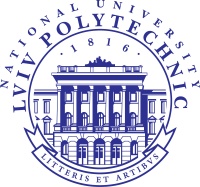Lviv Polytechnic National University
| Lviv Polytechnic National University | |
 | |
| Type | Higher educational institution |
|---|---|
| Abreviation | NULP |
| Motto | «Litteris et Artibus» |
| Anthem | Gaudeamus |
| Established | 7 of March 1816 |
| Students | 31000 |
| Ph.D. students | 1000 |
| Doctors of Sciences | 200 |
| Staff | 2000 |
| Predecessor | Lviv Polytechnic State University |
| Rector | Yuriy Bobalo |
| Location | S. Bandery Str., 12 (main building) Lviv, Ukrain |
| Web-site | http://lp.edu.ua |
Зміст
General information
Lviv Polytechnic National University is the oldest technical higher educational institution in Ukraine and East Europe. It was founded in 1816. University consists of 16 institutes, 114 departments; autonomous, additional and general subdivisions.
Short history
It was founded in 1816.
Technical Academy established in 1844.
In 1877 the academy was renamed on Higher Polytechnic School and was included as higher technical educational institution of the Austro-Hungarian Empire. That new academical year was started in new building located on S. Bandery Str.
Since 1921 to 1939 academical institution was called Lviv Polytechnic. After Soviet Power in 1939 it was renamed on Lviv Polytechnic Institut.
In June 1993, the year before its 150 anniversary, Lviv Polytechnic Institute get the highest IV accreditation level, university status and name "Lviv Polytechnic State University". In 2000 Lviv Polytechnic got National University status.
8 July 2009 the Cabinet of Ministers of Ukraine on their meeting designated Lviv Polytechnic National University as a self-management research higher educational institution.
From its establishment till now a number of prominent scientists and educators, including renowned architect Julian Zakhariyevych, author of the main building of the University were rectors of the Lviv Polytechnic. In 1879 Julian Medvedskyi became the first Ukrainian rector of the Polytechnic. In 1991 Yuri Rudavskii became the first democratically elected rector in independent Ukraine. Starting 2007 Professor Yuriy Bobalo headed the University.
Scientific research
From its early establishment Lviv Polytechnic has proved to be a powerful center of science and education in Europe, the generator of technical ideas and inventions. Based on many years of theoretical and experimental activities at the University were developed the scientific schools that are well known in Ukraine and abroad. They have leading positions in Ukraine in the following scientific and technical areas: nanomaterials and nanotechnology, new materials and technologies; energy- and resource-saving technologies; basic research of the most important natural, social and human sciences; advanced computer systems and information technology; instrumentation and measuring equipment.
The structure of scientific research management is:
- Scientific Research Department (SRD)
- Scientific and Technical Council
- Council of Young Scientists
All of the scientific and technical activities are parts of the training in the university structure. They are carried out by scientific collectives, individual scientists under agreements, contracts, government contracts, programs and projects within the framework of Scientific Research Department (SRD).
Main research areas of Lviv Polytechnic National University
- Problems of Economics and Management of innovative development of industrial and economic structures.
- Development of new energy- and resouce saving technologies in construction with taking into account trends in environmental management and conservation.
- Materials, components, tools and systems for telecommunications, radio, electronic and medical equipment.
- Resource saving technologies and management of intelligent systems in energy supplying of economic activity.
- Figure research and research of external gravity field of the Earth and planets, creating of GPS software and geospatial data bases.
- The movement of the Ukrainian nation for the revival of its statehood and development (early XX century - early XXI century.).
- Formation of human dwelling environment by architectural and city planning means.
- Development of theoretical bases and technology processes of new organic and inorganic substances and materials for various purposes, chemical and ecological monitoring of existing and new industries.
- Perspective computer systems and information technologies.
- Modern and technology and resource saving technologies in transport, industry, reliability and diagnostics of machines, structures and facilities.
- Development of theoretical bases, software engineering, mathematical software for computer, measurement and control systems and their metrological support and certification testing.
- Development of mathematical methods and physical-mechanical models and their applying to solving applied problems.